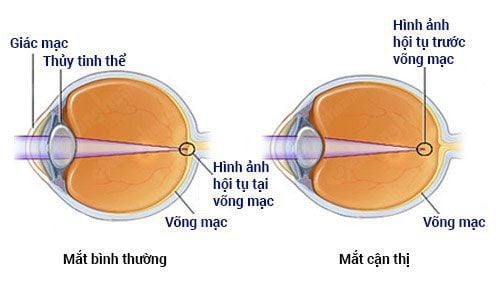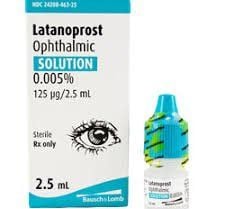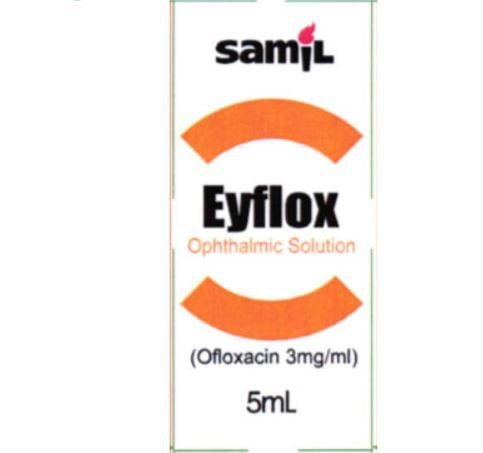This is an automatically translated article.
The article was professionally consulted by an eye doctor - Department of Medical Examination & Internal Medicine - Vinmec Hai Phong International General HospitalStatistical studies show that the incidence of refractive errors is increasing rapidly in Vietnam. Among them, farsightedness is a common vision problem. Farsightedness is not only seen in adults but even children can still be farsighted. So what is farsightedness and how to reduce it?
1. What is farsightedness?
Farsightedness (Hyperopia, Hypermetropia, Farsightedness) is a refractive error in which the patient can see distant objects very well, but has difficulty focusing on near objects. Farsightedness is a refractive error, when the eye is at rest, parallel incident light rays entering the eye will focus behind the retina. In order to see better, the patient's eyes must adjust to bring the image from the back to the right retina. In some severe cases of farsightedness, the person can only see things at a great distance.Farsightedness can run in families. Symptoms of this defect are quite similar to presbyopia in the elderly.
2. Signs to recognize farsightedness
There are quite a few eye manifestations related to farsightedness, the most common at first is eye strain. People with farsightedness will first find it difficult to see close up while the ability to see far is still very good.Farsightedness also causes a feeling of heaviness in the forehead, pain in both temples, sometimes people with farsightedness also have a headache. In order to see more clearly, the eyes must try to adjust, pulling the muscles of the forehead, eyebrows and eyelids, causing the eyes of farsighted people to have wrinkles, creating a specific phenotype called "far-sighted face". town”. Farsighted people sometimes experience headaches or eye pain, have to squint, or often feel tired when working at close distances.
Farsighted eyes always tend to turn inward, looking very "active", often giving the impression that the eyes are very sharp. Some cases of farsightedness can cause cross-eyed.
3. Causes of farsightedness
Farsightedness has 3 main causes:Congenital due to short eyeball axis. Genetic factors play an important role because you will be more likely to be farsighted if your parents are also farsighted; Not keeping the correct viewing distance, often looking far away, makes the crystalline lens always elastic. Over time, its elasticity decreases and gradually loses its ability to adjust. The lens has aged, lost its elasticity, and its elasticity decreases.

Bầu thủy tinh tật viễn thị
4. Complications of farsightedness
Untreated farsightedness can affect quality of life, inability to perform desired activities, and limited vision that can reduce the enjoyment of life as well as your safety. Dear.In children, untreated presbyopia can cause learning problems, causing them to squint or strain their eyes to maintain focus, leading to eye strain and headaches. treatment can lead to amblyopia (vision does not recover even with glasses correction)
5. Treatment of farsightedness
Farsightedness can be corrected by wearing glasses or contact lenses to change the focus point of light rays entering the eye. Patients can choose to wear rimmed glasses or contact lenses continuously or only when reading, working at a computer, or doing other things at close range.When choosing presbyopia lenses to correct visual impairments, aspheric high-index lenses should be chosen, especially for severe farsightedness. These lenses look thinner, lighter, and more compact than in regular glasses, reducing the bulging eye image that is common when wearing a telescope. However, note that aspherical lenses have a high refractive index and reflect a lot of light, so to achieve aesthetics and eye comfort, patients should choose lenses with anti-glare reflective coating, which helps to reduce glare. overcome the disadvantages of aspherical lenses.
Presbyopia lenses for children should be made of polycarbonate material because it is both light and impact resistant. In addition, optical lenses that have the ability to turn darker in the sun are highly recommended for children or those who spend a lot of time outdoors.
6. How to cure farsightedness at home
The use of glasses must be accompanied by an active eye training regimen to reduce presbyopia. Children need to be encouraged to engage in visual activities such as painting, coloring, reading stories, etc., the aim is to increase the refractive index of the lens, leading to a reduction in farsightedness (nearsightedness, farsightedness). ).For children with amblyopia, it is necessary to have a more active training regimen such as blindfolding and practicing seeing with amblyopia or practicing on systems of macular stimulators, binocular vision machines....
In addition, patients need to be treated for strabismus (if any) and should be monitored at least every 6 months to adjust glasses to suit the progression of presbyopia.
Please dial HOTLINE for more information or register for an appointment HERE. Download MyVinmec app to make appointments faster and to manage your bookings easily.













